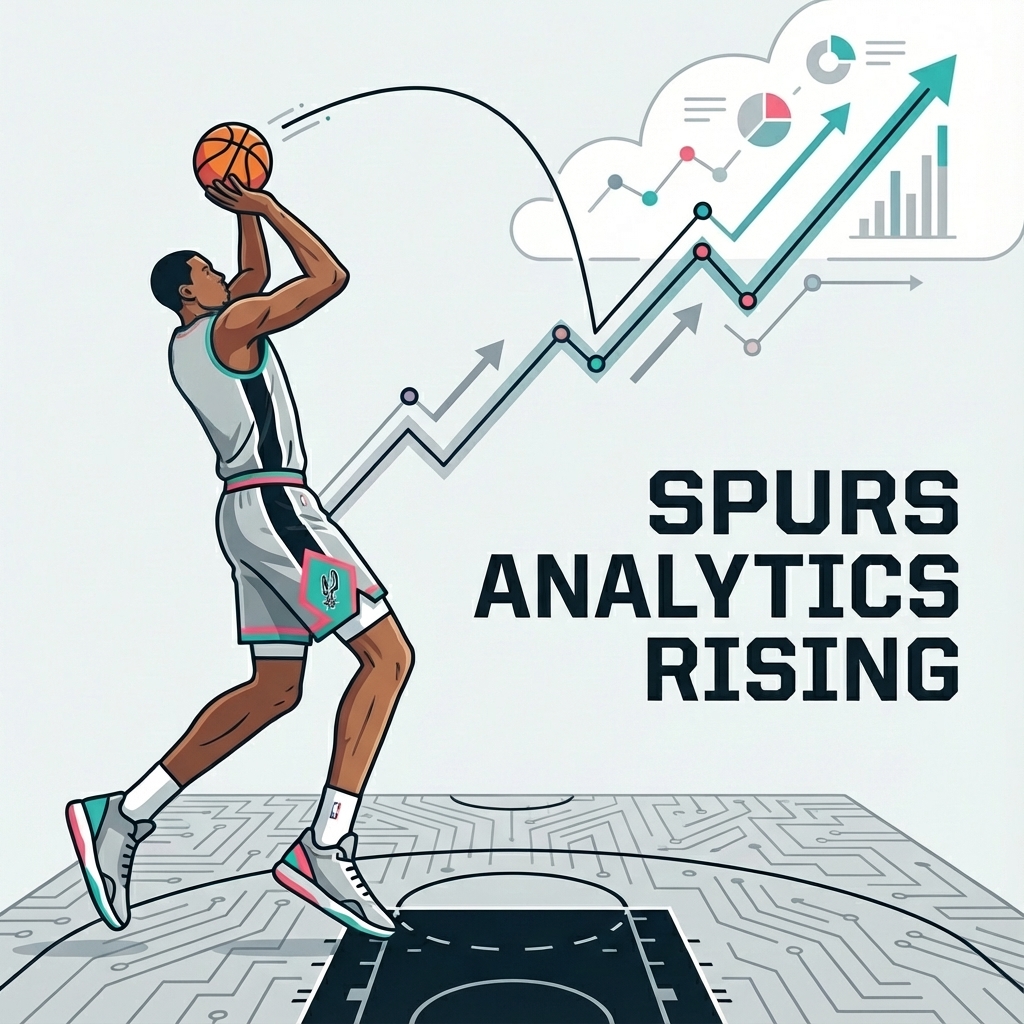Wembanyama’s 3-Point Trajectory: Why the Tallest Green Light Actually Makes Sense
A data-forward look at Wemby’s 3PT profile—distance, areas, playtypes, defender proximity—and a forecast using both stats and stretch-big comps.

TL;DR: Rookie Wemby hit ~32–33% on ~5.5 3PA; Year 2 jumped to ~35% on ~8–9 3PA. The weird quirk: he’s been better on pull-up 3s than catch-and-shoots, which is not how 7′4″ is “supposed” to work. Base-case career settles ~36–37%; upside pops to ~38–40% if the standstill footwork catches up.
The Weird (and Wonderful) Wemby Three
The headline isn’t just that he shoots. It’s which threes he shoots.
- Pull-ups (good): He’s unusually comfy off the bounce—step-backs, rhythm dribble into above-the-break looks. In stretches he’s lived around ~40% pull-up, which is wing stuff.
- Catch-and-shoot (lagging but fixable): The stationary, “easy” ones are where his footwork/tempo can drift. That’s the low-hanging fruit for a multi-point bump.
- France context: As a focal point overseas, ~85% of his 3s were contested. NBA spacing gives cleaner looks, but his mechanics still prefer rhythm.
Pull-quote: “Wemby shoots better when the shot is harder. The job now is making the easy ones feel the same.”
Where and how the attempts happen
- Above-the-break heavy. Think nail/top-of-arc and high wings. Corner volume is naturally low for a center who initiates.
- Trail 3s: Early-offense trails are free volume—clean windows without elite passing.
- Pick-and-pop (PnR man): Already viable. As screen angles and hit times sync with the guards, expect a steady lift.
- DHO/Off-screen: Sprinkled in; becomes more relevant if Spurs lean into Lauri/KD-style movement sets.
Defender proximity & shot quality
- Open vs contested: He actually got plenty of open NBA looks—he just didn’t punish them early. The rhythm piece (tiny “ghost dribble” or consistent hop) is the lever.
- Variance warning: When he’s hot from the top, it avalanches. When feet get misaligned, the catch-and-shoot % dips. Normal for ultra-tall shooters.
Year-over-year trend (volume + accuracy)
- Rookie: ~5.5 3PA, ~32–33%.
- Year 2: ~8–9 3PA, ~35%.
- Year 3 early: tiny sample hovering mid-30s. Directionally up.
Pull-quote: “If the catch-and-shoot hits wing-average (36–38%), the gravity goes nuclear.”
Comp cluster (body + playtype)
- Porziņģis: Stretch-5 mechanics; went from ~33% to ~39% by Year 3; career mid/high-30s on volume.
- Lauri Markkanen: 7-footer running semi-movement ABT (above-the-break) threes; near ~39% in his leap.
- Karl-Anthony Towns (ceiling template): multiple seasons ≥41% 3PT; shows how elite centers can keep high % on volume.
- (KD is more wing than 5, but useful as a “tall pull-up shooter” arc.)
Forecast ranges
- Base case (most likely): 36–37% career on high ABT volume; pull-up remains a strength; catch-and-shoot normalizes.
- Ceiling: 38–40% if standstill cadence locks in and guard table-setting improves.
- Floor: 34–35% if C&S never fully stabilizes (still warps space because…7′4″).
What moves the needle fastest
- Repeatable C&S footwork: same base, less drift.
- More “laces-up” reps from advantage creators: earlier, cleaner windows.
- Trim the late-clock 28-footers: keep the pull-ups that punish drop.
Big picture
Even mid-30s on volume forces defenses to pick a poison: close hard and give drives/lobs, or live with a 7′4″ ABT jumper that keeps creeping up in accuracy. If he parks in 36–38% land while maintaining volume, we’re in KAT-adjacent impact territory—plus elite rim protection. Videogame build.
Notes & sources to link when publishing
- Season splits & attempts (ESPN / Basketball-Reference player pages).
- Pull-up vs catch-and-shoot write-ups (CBS Sports, Ringer, local Spurs analysis).
- Synergy-style playtype notes (pick-and-pop, spot-up).
- Comps: Porziņģis, Markkanen, KAT season lines.